The fulfillment of Old Testament prophecies by Jesus is a cornerstone of Christian theology‚ demonstrating His divine identity and mission․ Over 300 specific predictions‚ spanning birth‚ ministry‚ death‚ and resurrection‚ were miraculously completed in His life‚ offering profound evidence of His messianic role․ These prophecies‚ such as His birth in Bethlehem and crucifixion‚ highlight the statistical improbability of coincidence‚ underscoring divine orchestration․
Overview of Messianic Prophecies in the Old Testament
The Old Testament contains numerous messianic prophecies that foretell the coming of Jesus Christ․ These predictions span various books and authors‚ covering key events in His life‚ such as His birth in Bethlehem‚ ministry‚ death‚ and resurrection․ Over 300 specific prophecies are recorded‚ with scholars noting the difficulty of counting them precisely due to interpretations of direct and indirect references․ These prophecies‚ delivered by kings‚ prophets‚ and poets‚ provide a coherent portrait of the Messiah‚ emphasizing His divine nature‚ redemptive mission‚ and ultimate triumph over sin․ They serve as a theological foundation‚ pointing to Jesus as the fulfillment of God’s plan for humanity․

The Significance of Prophecies in Establishing Jesus’ Identity
The fulfillment of Old Testament prophecies is central to validating Jesus’ identity as the Messiah․ These predictions‚ made centuries in advance‚ provide a compelling case for His divine origin and mission․ By fulfilling specific prophecies‚ such as His virgin birth‚ crucifixion‚ and resurrection‚ Jesus demonstrated that He was the long-awaited Savior of humanity․ These events‚ meticulously recorded in the New Testament‚ align perfectly with messianic forecasts‚ confirming His role as the Son of God․ The precision and accuracy of these fulfillments offer powerful evidence‚ challenging skeptics and strengthening the faith of believers in His unique identity and purpose․

Categories of Prophecies Fulfilled by Jesus
Jesus fulfilled prophecies about His birth‚ ministry‚ death‚ and resurrection‚ each category providing profound evidence of His divine identity and purpose․
Prophecies Related to Jesus’ Birth
Jesus’ birth fulfilled numerous Old Testament prophecies‚ confirming His messianic identity․ He was born in Bethlehem‚ as foretold by Micah (Micah 5:2)‚ and born of a virgin‚ fulfilling Isaiah’s prophecy (Isaiah 7:14)․ The timing of His birth aligned with the arrival of a ruler from Judah (Genesis 49:10)․ Additionally‚ His birth was preceded by a messenger‚ John the Baptist‚ and He was presented with gifts by the Magi‚ symbolizing His kingship and divinity․ These specific details‚ foretold centuries earlier‚ underscore the divine orchestration of His birth and validate His role as the Messiah․
Prophecies Concerning Jesus’ Ministry and Life
Jesus’ ministry and life fulfilled numerous Old Testament prophecies‚ highlighting His divine mission․ He was foretold to be a light to the Gentiles (Isaiah 49:6)‚ which He fulfilled by expanding His message beyond Israel․ His triumphal entry into Jerusalem on a donkey (Zechariah 9:9) symbolized His humble yet righteous kingship․ Additionally‚ He was prophesied to heal the brokenhearted and preach to the poor (Isaiah 61:1)‚ which He demonstrated through His miracles and teachings․ These prophecies‚ fulfilled with precision‚ underscored His role as the Messiah and the fulfillment of God’s plan for humanity‚ further solidifying His identity and purpose․
Prophecies About Jesus’ Death and Resurrection
Jesus’ death and resurrection were foretold in vivid detail in the Old Testament․ He was prophesied to be pierced in His hands and feet (Psalm 22:16) and betrayed for 30 pieces of silver (Zechariah 11:12-13)․ Isaiah 53:7 described Him as silent before His accusers‚ and His crucifixion fulfilled the imagery of the suffering servant․ Additionally‚ His resurrection was foretold in Psalm 16:10‚ where it was written that His body would not see decay․ These prophecies‚ fulfilled with precision‚ confirm the divine orchestration of His sacrifice and victory over death‚ serving as a cornerstone of Christian faith and evidence of His messianic identity․
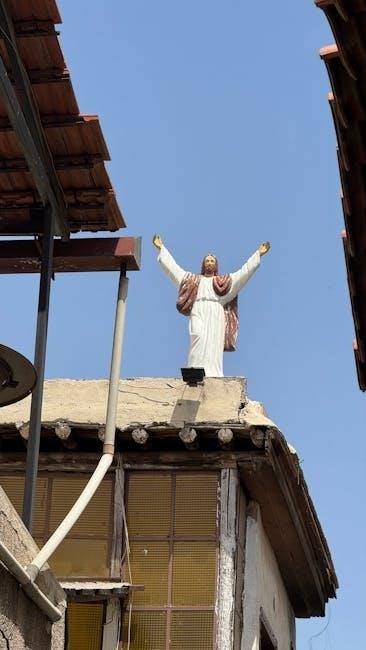
Specific Prophecies Fulfilled by Jesus
Jesus fulfilled numerous Old Testament prophecies‚ including His virgin birth‚ betrayal for 30 pieces of silver‚ and crucifixion with pierced hands and feet․ Over 300 prophecies were completed in His life‚ as detailed by scholars like Peter Stoner‚ who highlighted the statistical improbability of such events occurring by chance․
Born in Bethlehem (Micah 5:2)
Micah 5:2 prophesied that the Messiah would be born in Bethlehem‚ a small Judean town․ Jesus fulfilled this prophecy‚ as recorded in Luke 2:4-7‚ when He was born there during Caesar Augustus’ census․ This fulfillment is significant‚ as Bethlehem was the city of King David‚ linking Jesus to David’s lineage․ The odds of this specific prophecy being fulfilled by chance are astronomically low‚ highlighting divine orchestration․ Peter Stoner calculated the probability of one person fulfilling even 48 such prophecies as 1 in 10^157‚ underscoring the supernatural nature of Jesus’ birth․ This prophecy‚ among others‚ confirms Jesus’ identity as the Messiah‚ aligning with Old Testament expectations and New Testament realities․
Born of a Virgin (Isaiah 7:14)
Isaiah 7:14 foretold that the Messiah would be born of a virgin‚ a miraculous and unique event․ This prophecy was fulfilled through Jesus’ birth to Mary‚ a virgin‚ as recorded in Luke 1:26-38 and Matthew 1:22-23․ The Hebrew word “almah” in Isaiah signifies a young‚ unmarried woman‚ but in context‚ it implies a virgin․ Jesus’ virgin birth was a divine miracle‚ emphasizing His supernatural origin and sinless nature․ This fulfillment underscores God’s sovereign plan and the uniqueness of Jesus’ identity as the Son of God‚ separating Him from ordinary humanity and fulfilling a prophecy central to messianic expectations․ The virgin birth remains a cornerstone of Christian doctrine‚ highlighting divine intervention in human history․
Entrance into Jerusalem on a Donkey (Zechariah 9:9)
Zech․ 9:9 prophesied that the Messiah would enter Jerusalem humbly‚ riding a donkey․ Jesus fulfilled this by entering Jerusalem on a donkey‚ as recorded in Luke 19:35-37․ The crowd spread their cloaks and praised God‚ recognizing the fulfillment of prophecy․ This act symbolized Jesus’ kingship and humility‚ contrasting with worldly displays of power․ The donkey‚ a symbol of peace‚ emphasized His mission of salvation over conquest․ By fulfilling this prophecy‚ Jesus openly declared His messianic identity‚ aligning with Old Testament expectations․ This event‚ known as Palm Sunday‚ marked a pivotal moment in Jesus’ ministry‚ showcasing divine fulfillment and reinforcing His role as the anticipated Savior․ The prophecy’s precision underscores the supernatural orchestration of His life and mission․
Betrayal for 30 Pieces of Silver (Zechariah 11:12-13)
Zech․ 11:12-13 foretold the betrayal of the Messiah for 30 pieces of silver․ This prophecy was fulfilled when Judas Iscariot betrayed Jesus for exactly 30 pieces of silver‚ as recorded in Matt․ 26:14-16․ The act symbolized the undervaluing of Jesus’ worth by humanity․ After the betrayal‚ Judas threw the silver into the temple‚ and it was used to buy the potter’s field‚ fulfilling every detail of the prophecy․ This event not only showcased the precision of biblical prophecy but also highlighted the depth of human sin and the necessity of Jesus’ sacrifice․ The fulfillment of this prophecy stands as a testament to the divine orchestration of Jesus’ life and mission‚ aligning perfectly with the Old Testament’s foretelling․
Silent Before His Accusers (Isaiah 53:7)
Isaiah 53:7 prophesied that the Messiah would remain silent before His accusers‚ enduring injustice without protest․ This prophecy was fulfilled during Jesus’ trials‚ as recorded in Matthew 26:62-63‚ Mark 14:60-61‚ and John 19:9․ Despite false accusations and mockery‚ Jesus chose not to defend Himself‚ embodying the humility and obedience foretold by Isaiah․ His silence demonstrated His commitment to fulfilling God’s plan‚ even in the face of extreme adversity․ This fulfillment underscores Jesus’ divine identity and His willingness to suffer for the sins of humanity‚ aligning perfectly with the prophecy’s depiction of the suffering Servant․ The silence of Jesus stands as a powerful testament to His messianic role and redemptive mission․
Crucifixion and Piercing of Hands and Feet (Psalm 22:16)

Psalm 22:16 foretells the crucifixion of the Messiah‚ describing the piercing of His hands and feet․ This prophecy was fulfilled when Jesus was nailed to the cross‚ as recorded in John 19:18 and 20:25-27․ The Roman soldiers‚ unaware of the scriptural significance‚ carried out this act‚ which was a direct fulfillment of David’s prophecy written centuries earlier․ The piercing of Jesus’ hands and feet symbolizes His willingness to endure physical suffering for the redemption of humanity․ This specific detail‚ recorded in both Old and New Testaments‚ reinforces the divine orchestration of Jesus’ death and resurrection‚ further solidifying His identity as the Messiah․ The accuracy of this prophecy highlights the supernatural nature of Jesus’ mission and sacrifice․

Statistical Probability of Prophecies Being Fulfilled
Peter Stoner calculated the probability of one man fulfilling even 48 prophecies as 1 in 10 to the 157th power‚ highlighting the divine orchestration behind Jesus’ fulfillment of over 300 specific predictions․
Calculations by Peter Stoner in “Science Speaks”
Peter Stoner‚ in his book Science Speaks‚ calculated the probability of one man fulfilling just 48 specific Old Testament prophecies․ He estimated the odds at 1 in 10 to the 157th power‚ a statistically impossible coincidence․ To illustrate‚ Stoner suggested covering Texas with silver dollars two feet deep‚ marking one‚ and having a blindfolded person find it․ This analogy underscores the divine orchestration behind Jesus’ fulfillment of over 300 prophecies․ Stoner’s work demonstrates that the likelihood of these events occurring by chance is unimaginably low‚ providing compelling evidence for Jesus’ messianic identity and the supernatural nature of biblical prophecy․
Odds of Fulfilling 48 Specific Prophecies
The probability of one person fulfilling 48 specific Old Testament prophecies is astronomically low‚ calculated at 1 in 10 to the 157th power․ This staggering statistic‚ derived from Peter Stoner’s research‚ illustrates the impossibility of coincidence․ To put this into perspective‚ imagine covering the entire state of Texas with silver dollars two feet deep․ Marking one coin and having a blindfolded person find it would be equally improbable․ Such mathematical improbability strongly suggests divine orchestration‚ providing compelling evidence that Jesus’ fulfillment of these prophecies was not accidental but purposefully ordained‚ further validating His identity as the Messiah․
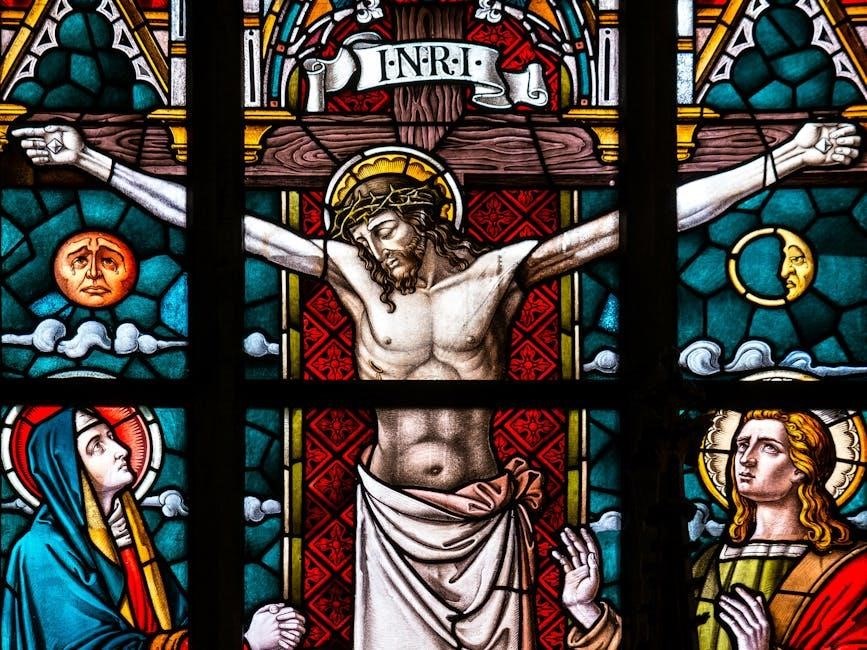
Old Testament Types and Foreshadowings
The Old Testament contains numerous types and foreshadowings that point to Jesus‚ such as the Passover lamb and the bronze serpent‚ symbolizing His redemptive mission and divine purpose․
Jesus as the Passover Lamb (Exodus 12:21‚ 1 Corinthians 5:7)
The Passover lamb‚ central to Israel’s deliverance from Egypt‚ symbolizes Jesus’ role as the ultimate sacrifice for humanity’s salvation․ Exodus 12:21 describes the lamb’s selection and slaughter‚ while 1 Corinthians 5:7 identifies Jesus as “our Passover‚” slain to atone for sin․ The lamb’s blood‚ applied to doorposts‚ spared Israel’s firstborn‚ foreshadowing Jesus’ blood applied to hearts‚ saving from eternal judgment․ Both the lamb and Jesus were spotless‚ chosen five days before sacrifice‚ and crucified during Passover‚ reinforcing Jesus’ identity as the Lamb of God‚ fulfilling Old Testament prophecy and offering redemption through His sacrifice․
Jesus as the Bronze Serpent (Numbers 21:9‚ John 3:14)
In Numbers 21:9‚ Moses lifted a bronze serpent to heal the Israelites bitten by snakes‚ symbolizing divine judgment and redemption․ Jesus referenced this in John 3:14‚ equating His crucifixion to the lifted serpent‚ emphasizing salvation through His sacrifice․ The bronze serpent represented judgment and healing‚ foreshadowing Jesus’ death for humanity’s sin․ Both acts required faith: the Israelites looked to the serpent for healing‚ and believers look to Jesus for salvation․ This typology highlights Jesus’ role as the ultimate source of healing and redemption‚ fulfilling the Old Testament shadow with His sacrifice‚ offering eternal life to all who trust in Him․
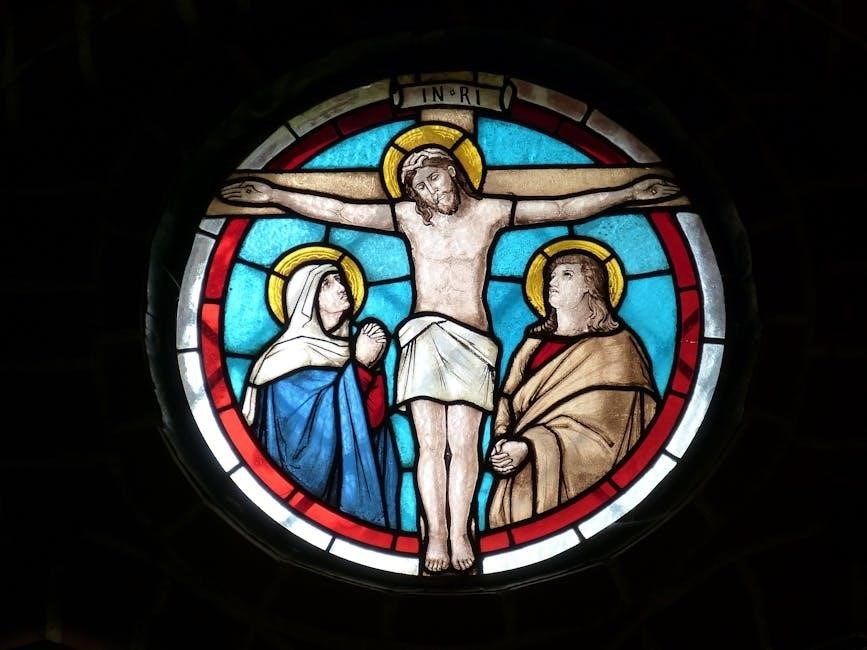
The New Testament as the Fulfillment of the Old
The New Testament reveals Jesus fulfilling Old Testament prophecies‚ completing God’s plan through His life‚ death‚ and resurrection as the Passover Lamb and Savior․
Examples of New Testament Fulfillment of Old Testament Prophecies
The New Testament provides numerous examples where Jesus fulfilled Old Testament prophecies․ For instance‚ Jesus was born in Bethlehem‚ aligning with Micah 5:2‚ and entered Jerusalem on a donkey‚ as foretold in Zechariah 9:9․ His crucifixion and resurrection were prophesied in Psalm 22:16-18 and Isaiah 53:7‚ respectively․ Additionally‚ Jesus’ role as the Passover Lamb‚ symbolized in Exodus 12:21‚ was fulfilled when He sacrificed Himself for humanity’s sins․ These examples demonstrate how the New Testament completes the Old Testament’s prophetic narrative‚ confirming Jesus as the Messiah․
The Role of the New Testament in Interpreting the Old
The New Testament serves as the key to understanding the Old Testament‚ revealing how its prophecies and types foreshadowed Jesus․ New Testament writers often quoted Old Testament passages to illustrate their fulfillment in Christ․ For example‚ 1 Corinthians 5:7 identifies Jesus as the Passover Lamb‚ fulfilling Exodus 12:21․ Similarly‚ John 3:14 links Jesus to the bronze serpent in Numbers 21:9․ This interpretive approach shows that the Old Testament is not merely history but contains Messianic symbols and themes pointing to Jesus․ The New Testament thus unlocks the deeper meaning of the Old‚ confirming Jesus as the ultimate fulfillment of God’s plan․
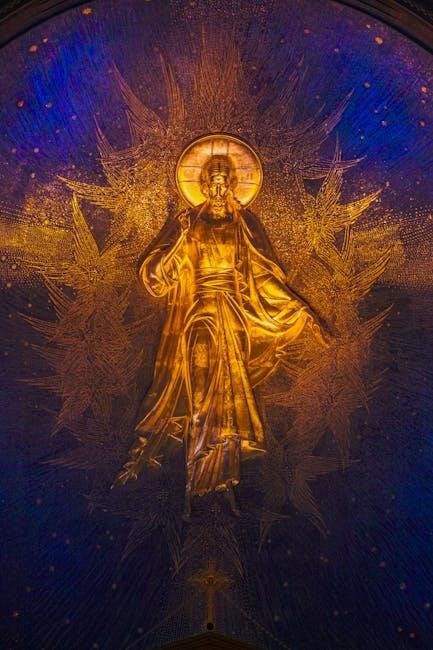
Skeptic Objections to the Fulfillment of Prophecies
Skeptics question the validity of fulfilled prophecies‚ arguing that Gospel writers shaped events to fit Old Testament texts‚ stretched typology‚ or took passages out of context․
Objection 1: Gospel Writers Deliberately Shaped Events to Match Prophecies
Skeptics argue that Gospel writers intentionally crafted Jesus’ life to align with Old Testament prophecies‚ suggesting they shaped events to portray Him as the Messiah․ However‚ this claim overlooks the historical context․ Early Christian writers‚ facing severe persecution‚ had little incentive to invent stories․ They often depicted Jesus as humble and sacrificial‚ contrary to popular messianic expectations of a conquering hero․ The fulfillment of specific prophecies‚ such as His birth in Bethlehem and crucifixion‚ also defies statistical probability‚ pointing to divine orchestration rather than human fabrication․ This objection ignores the credibility of eyewitness accounts and the transformative impact of Jesus’ life and teachings․
Objection 2: Old Testament Typology is Stretched or Contrived
Skeptics often claim that Old Testament types and foreshadowings are stretched or contrived to fit Jesus’ life‚ offering little evidence for His messianic identity․ While some interpretations may push boundaries‚ the close correspondence between many Old Testament texts and New Testament events is striking․ For example‚ Jesus as the Passover Lamb (Exodus 12:21‚ 1 Corinthians 5:7) and the Bronze Serpent (Numbers 21:9‚ John 3:14) are deeply rooted in biblical symbolism․ These connections are not arbitrary but reflect a deliberate‚ divinely orchestrated pattern․ The cumulative case for Jesus as the Messiah‚ supported by such typology‚ provides a compelling argument against the idea of contrivance‚ emphasizing instead the intentional design of Scripture․
Objection 3: New Testament Writers Took Old Testament Texts Out of Context
A common objection is that New Testament writers misapplied Old Testament passages‚ taking them out of their original context to support Jesus’ messianic identity․ While it is true that New Testament authors often used typological or symbolic interpretations‚ this does not necessarily mean they misrepresented the original meaning․ Early Jewish interpreters‚ such as those from the School of Alexandria‚ commonly sought deeper‚ spiritual meanings in Scripture․ However‚ scholars like Diodore of Tarsus emphasized the importance of maintaining the original historical context․ The close correspondence between Old and New Testament events‚ such as Jesus as the Passover Lamb‚ suggests that these connections were not contrived but part of a divinely orchestrated plan․
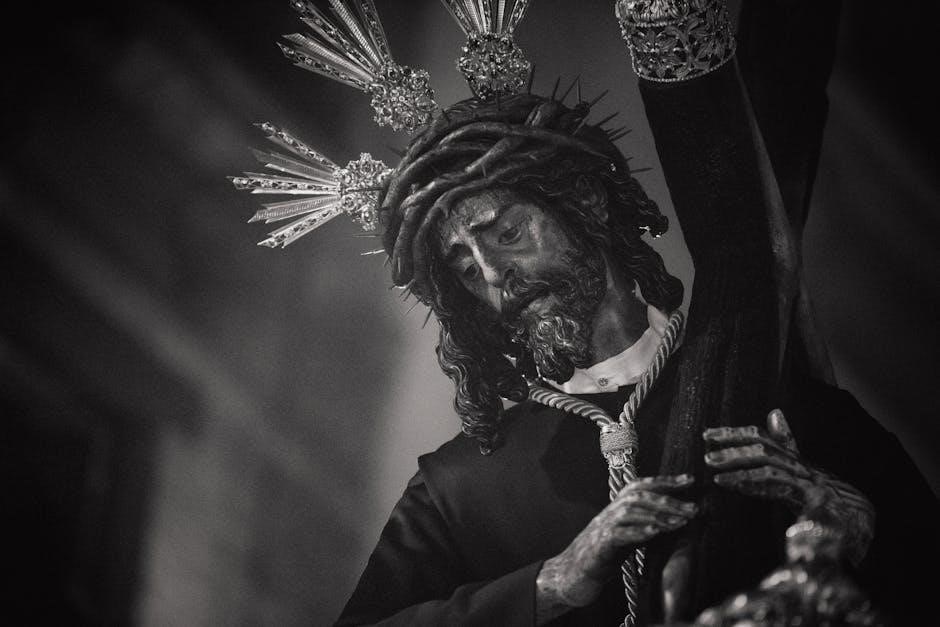
Jesuss fulfillment of over 300 Old Testament prophecies‚ including His birth‚ ministry‚ death‚ and resurrection‚ provides compelling evidence of His divine identity as the Messiah․
The Cumulative Case for Jesus as the Messiah
The fulfillment of numerous Old Testament prophecies by Jesus presents a compelling cumulative case for His messianic identity․ Over 300 specific predictions‚ including His birth in Bethlehem‚ crucifixion‚ and resurrection‚ align seamlessly with His life․ The statistical improbability of these events occurring by chance‚ as calculated by scholars like Peter Stoner‚ underscores the divine orchestration behind His ministry․ Each prophecy‚ such as His virgin birth and silent endurance before accusers‚ adds layers of evidence․ Together‚ they form an intricate tapestry that validates Jesus as the Messiah‚ demonstrating a purposeful alignment between Old Testament foreshadowing and New Testament fulfillment․
The Divine Orchestration of Prophecies and Their Fulfillment
The fulfillment of Old Testament prophecies by Jesus reveals a profound divine orchestration‚ showcasing God’s sovereignty and purpose․ Each prophecy‚ such as His birth in Bethlehem and crucifixion‚ was meticulously fulfilled‚ demonstrating a masterful plan․ The statistical impossibility of these events occurring by chance highlights intentional design․ This orchestration underscores Jesus’ divine identity and mission‚ affirming His role as the Messiah․ The precise alignment of prophecy and fulfillment serves as a testament to God’s foreknowledge and control‚ offering compelling evidence of His divine nature and the authenticity of the Christian faith․
